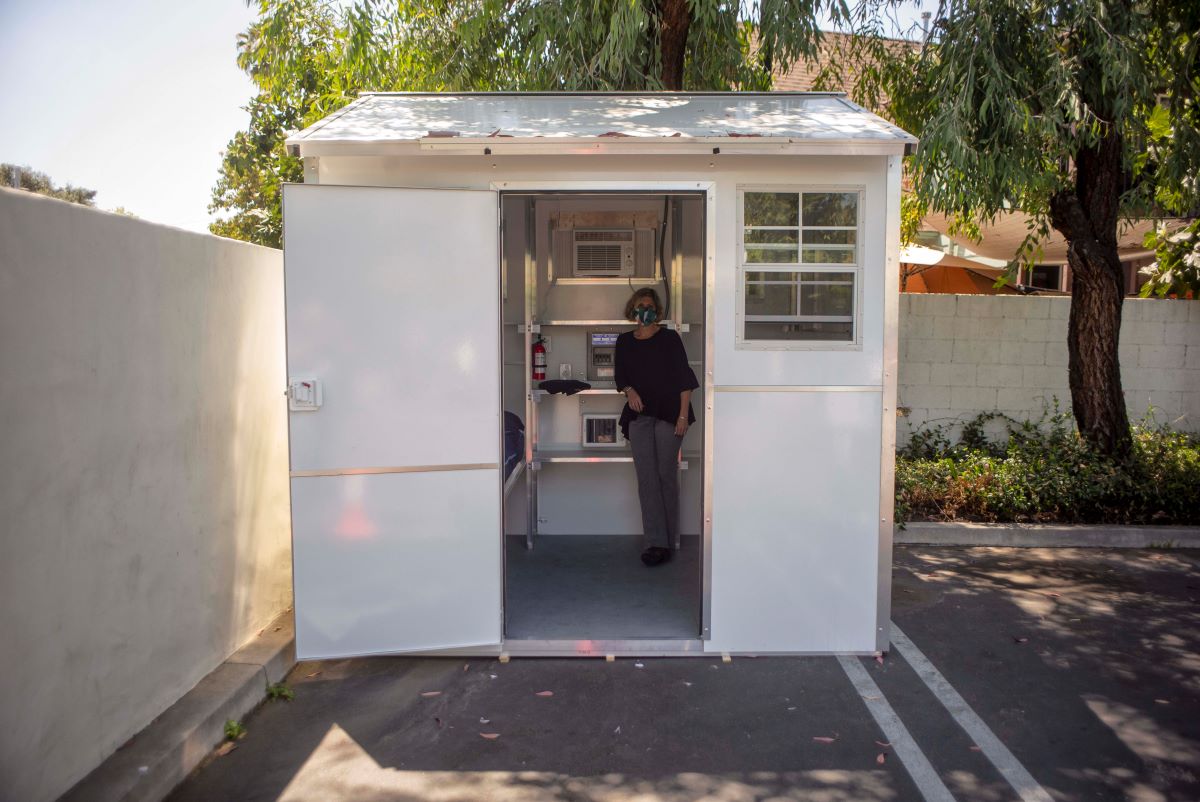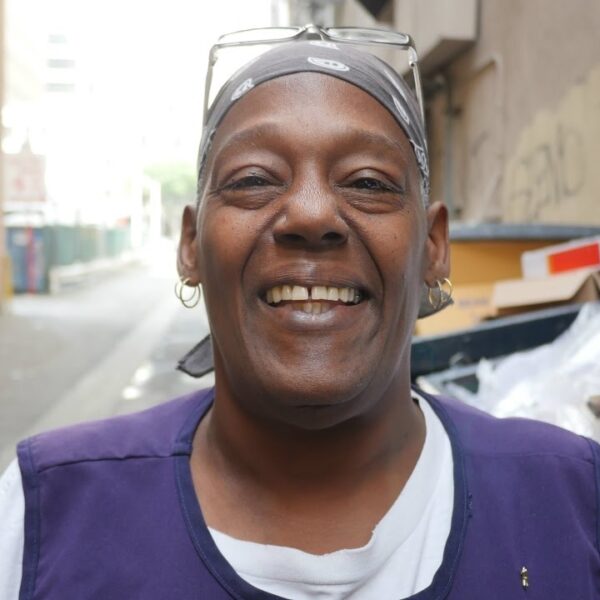It is the future. The year? 2023. The pandemic is a fading memory that left its permanent mark on the world in a haphazard manner, like infant fingerprints across a stainless-steel appliance. Of course, the lowest places have been smudged the most, as they were easier to reach.
Millions of unemployed, newly evicted American workers, renters, and dreamers fall between the cracks of a social structure that was not contrived to hold the weight of significant, lasting poverty, let alone individualism. In the end, however, everyone who is separate will be “housed” together.
You are regarded a fortunate soul comparatively. You walk the half-acre stretch of patchy vegetation with the 99 others. One hundred souls in total to be warehoused and shelved, counted, and caged.
In the distance, metal glistens under the toxic rays of a polluted sun. You have done this death march for the better part of two years. You no longer must think about it. Instinctively, your feet know the way to your cage. You arrive “home” to a 48-square-foot cubicle with narrow walls and zero privacy. Years ago, you would reflect on the irony of how your “house” was precisely the size of the average American prison cell, but by now, you have grown too numb to care.
The “good people” of the world would love to believe that you are an addict of sorts or a violent psycho waiting to pounce on school children for the mere sake of cynicism. From a purely statistical standpoint, it is much more likely that you are a member of the working poor class, a war veteran, a domestic violence survivor, a 19-year-old orphan who aged out of the foster system, or a kindly senior citizen with a crippling case of pancreatic cancer. The rabbit hole runs deep.
For the sake of brevity, let’s say you are a widower. You lost your wife and your job as a sous chef to COVID-19. The 3-bedroom apartment you once shared with your lovely family went shortly after the eviction moratorium was up. Most heartbreaking of all was when you lost your children to the shelter system. The government is turning quite the dime to rotate them from foster home to foster home by making your poverty look like neglect. This thought stings and sits painfully in your eye for a moment, bringing bits of saline to the surface.
You glance around the room. The bathroom is shared, and the cubicle wall is quite low. The kitchen is a common ground where one can weep so long as they don’t mind sharing the painstaking details with total strangers. For you, there is neither the space nor the privacy to unpack such emotional baggage. You leave it where your heart is, on the floor.
What’s left of your life exists in a pile of weathered, mildewed legal documents tucked neatly into a box, same as you. Each time you are assigned a new caseworker, this well-intentioned but naive individual rifles through your manuscripts, making quite the show.
But you know the truth— only about 15% of bridge shelter residents transition into permanent, private homes. The overwhelming majority will wind up back on the street, uncertain how to use their newfound freedom after being caged for so long.
In your cell – er, your “home” – you sometimes dream of breaking free and pitching a tent under the stars. A romanticized idea, you know, for the air outside might flow freer, but the atmosphere is ever so hostile. The world has many questions for you. It asks things like “why don’t you just get a job?” and “how can you be poor in the wealthiest nation the world over?”. Still, it never asks the boldest question of all:
Why are we warehousing human beings and calling their cages homes?
While right now, you might not forcibly reside in a tiny box and have to share a bathroom with total strangers, the alarming truth is that this kind of scenario is cropping up all over the nation. It is being pitched to the public as a temporary solution to homelessness. Statistically speaking, it is neither temporary nor a solution. It is the warehousing of human beings unfolding before our very eyes, being normalized with the end goal of setting a dystopian stage for everybody’s future – including yours.
“Every time I see “cage-free eggs” or free-range chickens,” I’m reminded of my homeless friend who said society cares more about how chickens raised for food are treated than they care how homeless people are treated.”
~Commentary from Invisible People’s Facebook page regarding a “housing solution” where two people share a tiny box
This is not a new or novel concept. In Hong Kong, similar dwelling spaces are aptly titled “coffin homes.” Here in the US, the verbiage is different; the end result is the same.
Some say these manufactured tiny shacks are being called homes in order to sway public opinion in favor of their construction. If that is the case, the misleading moniker is working.
According to an LA City Council campaign made possible by supporters of Councilmember Mitch O’Farrell, “…voters have approved funding for facilities like this”. Voters also appear to be the key financial contributors for on-site services housed within these prison-like properties.
Given these facts, it does seem to behoove politicians to make pallet “housing” as appealing to the public as possible. However, once the facts are deconstructed, it becomes clear that this is just a trendy new way to keep homeless people out of the line of vision of the rest of the world.
What Makes a Structure a House? What Makes a House a Home?
Shameful as it sounds, it’s high time we agree about what makes a structure worthy of being defined as a house. With such loose definitions floating around, it appears that the only requirement everyone can agree on is the fact that the structure has a roof. Entirely too many people seem to think that homeless people crammed into compact containers like chickens on the way to slaughter should be grateful to have a roof over their heads.
But what about things like privacy, safe architecture, utilities, and personal space? Have we learned nothing of the importance of personal space after over a year of social distancing?
Deeper still is the fact that many of these modern coffin-like contraptions are not just being called houses. They’re being called homes. This wording implies a sense of warmth and security that a metal cubicle simply cannot provide.
Here is a description of what a pallet “home” feels like from the mouth of a member of the homeless community:
“My health is going quickly, my mental health has worsened, & my hope of ever having a home is just hanging by a thin thread ?For me to be put into one of these would be humiliating, degrading, unsafe, and well… I would just not accept”.
Misinformed readers could wrongly perceive the quote above as a form of shelter resistance. But in reality, this human being is simply voicing a natural desire to be treated with respect and housed in a safe place. Since the dictionary definition of house lacks much-needed clarity, below are a few characteristics I believe we all can agree should be present in any humble abode.
Safety. Are Pallet Shelters, AKA ‘Bridge Housing’, Safe?
The fact of the matter is that these units are not safe enough to be considered homes. For one, there is the issue of limited personal space that we all know more than ever is a critical factor in reducing the spread of communicable illness.
It has also been revealed that many of these facilities use polyethylene to construct the walls. This substance is incredibly cheap because it is quite flammable. In effect, this is a recipe for disaster in any situation where many human beings are squeezed into a tight space.
Accommodating. Tiny Shacks Do Not Fit this Description, Either
Often, temporary dwelling spaces are described as accommodations. So, we can agree that even a temporary home should be accommodating. At present, tiny shacks fail the litmus test for this basic housing component. They don’t fill the needs of their inhabitants, who are often subjected to humiliation, lack of choice, and an overall absence of privacy.
Is This a Bridge to a House or a Pathway to Prison?
Hundreds of millions of dollars have been invested into these tiny shack communities. Sometimes referred to as “bridge housing,” this term implies these fixtures are temporary stops on a path to becoming housed.
The flaw with this thinking is that a bridge naturally has to lead to something other than a dead end.
In truth, we are short millions of affordable homes. As such, we simply do not have the resources to build anything beyond the bridge. Effectively, there are no homes on the other side, just more piles of paperwork and broken promises.
Executive Director of the Los Angeles Homeless Services Authority explained the conundrum with the following quote:
“… It’s a really expensive way to keep people homeless”.
Tiny, shared shacks, which wreak of Depression-era Shantytowns, are eerily similar to prison cells. At approximately 48 Square feet per cubicle, they are the exact same size as the average American jail cell. They also feature shared facilities, rodent problems, flammable walls, and a myriad of safety concerns. As they exist today, they’re a symbol of our refusal to house homeless people in places fit for human habitation.
The City of LA is currently shelling out roughly $1,825 per month per person to warehouse people. In reality, we could house people in real-life apartments for a fraction of that cost. And as our local politicians have so eagerly pointed out, the taxpayers are footing the bill.













